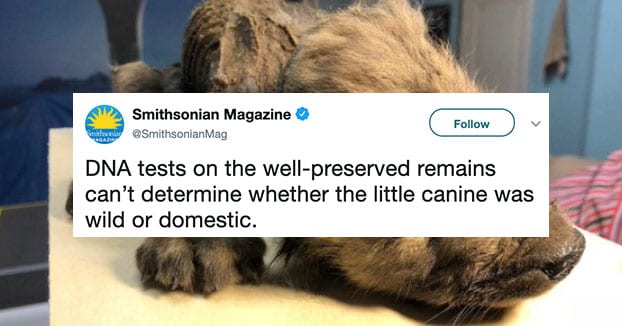There’s not much that people love like they do dogs – and it turns out that maybe humans haven’t changed all that much in the past 20,000 years.
At least, not when it comes to puppy love.
Scientists believe the male animal, found near the Indigirka River in Siberia, was around 2 months old when it died. Despite it being preserved by the freezing temperatures with its fur, whiskers, and teeth intact, researchers are not entire sure what species the little guy belongs to.
https://www.instagram.com/p/B5tEmYUIcKy/
“The Centre has Europe’s largest DNA bank of all canines from around the globe, yet in this case they couldn’t identify it from the first try,” admits Love Dalen, a representative from the Swedish Centre for Palaeogenetics.
They do know it’s around 18,000 years old, though preliminary gene sequences was unable to confidently call it a wolf or a dog – or really anything we currently know about.
Well-preserved remains of an ice age wolf were discovered in the area a few years ago (40,000 years old), and dozens of woolly mammoth bodies have also been recovered from the frozen ground. Some scientists hope they’ll be able to use the partial DNA sequences to bring the species back to life (because clearly they’ve never seen Jurassic Park).
As far as humans, it appears that they settled in the northernmost parts of Russia around 32,500 years ago. Previous research suggests that people began domesticating dogs anywhere between 10,000-40,000 years ago, so this little guy could have been a pet, a protector, a working dog, or a wild wolf species – we just don’t know.
https://www.instagram.com/p/B5gFw_CFDS0/
Scientists have called in Dogor, which means “friend” in the local Yakut language.
“This is intriguing, what if it’s a dog? We can’t wait to get results from further tests,” says Sergey Fedorov from the Institute of Applied Ecology of the North.
I’d have to say that’s an understatement, because I don’t think I’ve ever been more curious about an 18,000-year old anything in my entire life.






